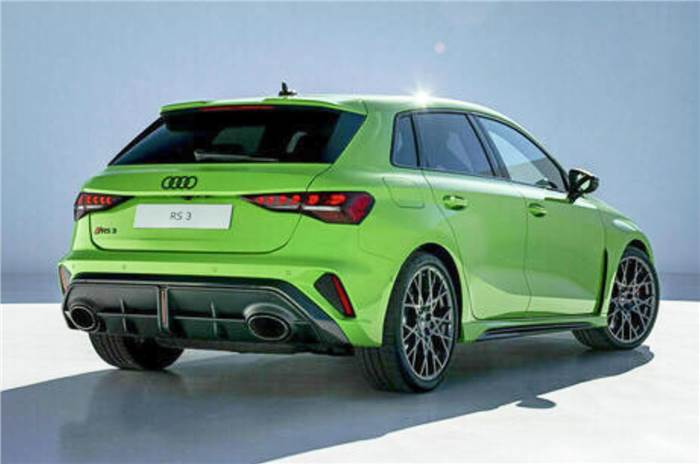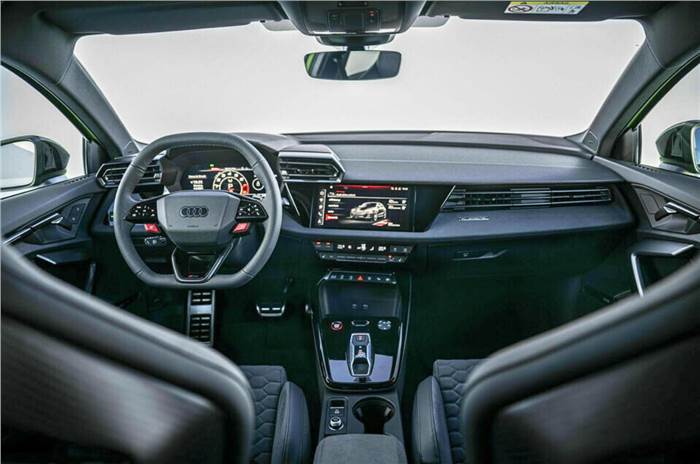Audi has officially unveiled the 2025 RS3 facelift, showcasing a series of updates. This latest iteration of the RS3, available in both Sedan and Sportback variants, promises to elevate the driving experience while maintaining the model’s iconic appeal.
Design and Exterior Enhancements
The 2025 RS3 facelift introduces a more aggressive and dynamic exterior design. The front fascia features a flatter and broader Singleframe grille, complemented by larger functional side air intakes. Above the front splitter, new apertures allow the car to sit even lower, enhancing its aerodynamic profile. The updated daytime running lights now boast a digital signature function with a checkered flag pattern, offering drivers the option to select from three additional designs via the car’s infotainment system.

The rear of the RS3 has also received attention, with revised tail-light graphics and a more prominent RS-specific diffuser. The facelift includes three new paint finishes: Ascari Blue metallic, Progressive Red metallic, and Daytona Grey matte, adding to the vehicle’s visual appeal.
Interior Upgrades
Inside, the RS3 facelift features a redesigned steering wheel with flat buttons that provide haptic feedback, similar to those found in the new Audi A5 and Q6 E-Tron models. The steering wheel also includes a red checkered flag button for accessing the Performance drive mode and a red RS button for the RS Individual drive mode.

The interior is further enhanced with optional carbon bucket seats, featuring a microfibre centre, nappa leather side bolsters, and a matte carbon finish on the backrest. The digital instrument cluster now places the rev counter at the centre, providing a more focused driving experience.
Performance and Driving Dynamics
Under the hood, the RS3 retains its powerful 2.5-litre five-cylinder turbocharged engine, delivering 400 hp and 500 Nm of torque. This engine enables the RS3 to accelerate from 0 to 100 km/h in just 3.8 seconds, with a top speed of 290 km/h. While the engine specifications remain unchanged, Audi has introduced a “further developed algorithm” for the modular driving dynamics controller (mVDC). This enhancement improves agility and stability, allowing for higher cornering speeds and increased lateral dynamics.
The RS3’s driving dynamics are further refined with the RS Torque Rear setting, which enables the car to oversteer by sending 100% of rear-axle torque to the outside wheel. This feature allows drivers to achieve a drift angle faster, enhancing the car’s performance on the racetrack.
The Audi RS3 is priced at approx. INR 62 lakh in Germany. Since we did not get the previous RS3, the likelihood of getting the latest version in India is slim.


